Gun Safety has become one of the most highly debated issues not just in the United States of America, but throughout the entire world. It is the responsibility of every gun or firearm owner to practise gun safety. Guns are used for protective purposes, but they can also be misused dangerously. The importance of safe handling of guns is not emphasized enough.
Such issues cannot and should not be taken lightly. If you are a completely new to owning a gun or are unsure how to practise gun safety, then it might seem a little intimidating. To make it easier to understand, we provide you with a complete guide to gun safety.
The 4 Basic Rules Of Gun Safety
Quick Navigation
These 4 rules were developed by Jeff Cooper, a Marine Corps officer. He was a combat veteran of both World War II and the Korean War. Based on his experience as a firearms instructor and competitive shooter, he has formulated these vital rules for gun safety. These rules are often prescribed because the idea behind each one of them is that prevention is better than cure.
1. Think And Treat Every Gun As If It’s Loaded
Never take for granted whether a gun is loaded or not. Even if you think that a gun is not loaded, you should assume that it is loaded. In 2018, there were 73 accidental deaths due to loaded firearms in the U.S alone. You may have the surest information that a gun is unloaded. But, it only takes a second for something to go wrong. It is better to be safe, then sorry and treat every gun as though it is loaded.
2. If You Aren’t Going To Shoot, Then Don’t Aim
Sometimes, people aim their gun at something that they have no intention of shooting at. It might be done in the form of a joke or you might be practising your aim. But, this is extremely dangerous. A gun should never be pointed at something that might accidently get hurt by it. It goes without saying that never aim at a person, unless you are defending yourself or in extreme situations. In many countries, brandishing a weapon at someone for no particular reason is a crime punished by the law.
3. Don’t Keep Your Finger On The Trigger, Till You Are Sure about Shooting
An accidental or negligent discharge can harm or even kill someone. A trigger can be actuated accidentally by the merest of touches. All of this can be prevented just by keeping your finger off the trigger, unless you are absolutely sure that you want to shoot at something.
4. Be Sure About Your Target
When there is a gun in your hands and a target in your sight, there is no place for confusion. 100% confirmation of your target is necessary. If you are even a little unsure, then don’t fire the gun at any cost. This will help avoid any collateral damage and ensure that you aren’t getting into any trouble.
Essentials Of Gun Safety
1. Knowing Your Gun
It is necessary that every firearm owner is familiar with their own guns. Basic details including knowing the difference between rifles, shotguns, pellet guns, pistols, etc. As an owner, it is your responsibility to have possess every possible detail relating to your gun. Some of these details include:
- Understanding how the gun works.
- Learning about the safety mechanisms of the gun.
- How to load/unload the gun.
Just like how every gun is different, safety precautions relating to each gun are also different. Make sure you do enough research and collect all the necessary information relating to your type or brand of firearm.
2. Beware Of Gun Modifications
Modifying your gun to suit your needs seems like an essential thing to do. Such modifications are widely available, which tempts gun owners to accessorize or changes and upgrade some parts of the firearm. People are modifying everything from the trigger to the safety mechanism of the gun. While it may seem like a harmless thing to do, it is important to remember that a small mistake in the modification can result in dreadful things. Factory model guns are tested extensively to make sure they are conforming to safety requirements. Whereas, modified models may not be through a long testing process to see if they work properly. If getting a gun modification is unavoidable for you, then make sure all the modifications are done via reputable gunsmiths or companies specializing in such activities.
3. Don’t Rely Too Much On The Safety Mechanism
The safety mechanism on any gun can trusted only to a certain extent. Mechanical safety cannot be termed foolproof. It is not advisable to blindly trust that the safety mechanism works and doing so might lead to accidents. Gun owners must try their best to learn about the safety requirements of their guns and ensure that they are being thoroughly followed.
4. Maintain Your Gun
Usually gun owners ignore an important aspect of owning a gun i.e. maintenance of the gun. A well maintained gun is reliable, safe and consistent. The basic ways you can maintain your gun includes:
- Regularly lubricating the gun which prevents rusting and keeps the gun in good physical condition.
- Getting the gun service by a gunsmith periodically.
- Basic cleaning of the gun which is generally termed as a field strip and cleaning.
Gun Safety Rules Relating To Shooting
Gun Safety is something that must be followed meticulously at all times, including when you are shooting. When you shoot at something, it cannot be undone. Hence, you must take every precaution available to make sure that there are inadvertent casualties. Always make sure that your aim is on your target and not at anything else.
1. Pick Your Target Carefully
It is advisable to choose targets that provide very little resistance. You have to understand your target before you shoot at it. Keeping your target in mind, ask yourself the following questions:
- Does the target have a backstop?
A backstop is a material or surface placed behind the target to catch any strayed bullets. They prevent the bullet from hitting any unwanted object accidentally. Soft backstops are very suitable targets. Examples of soft backstops include dirt and sand, which act as conducive targets for shooting.
- What is the target surrounded by?
Make sure that the target isn’t surrounded by potentially harmful environments. For example, there shouldn’t be any explosives around the target. If you accidentally miss the target then it could cause an excessive amount of damage. Try your best to avoid shooting at water because bullets and pellets tend to skip off the surface, and water is always a very unpredictable target.
- Is there anything around the target that could cause a ricochet?
You must avoid shooting at hard or flat surfaces. These types of surfaces usually cause a ricochet. Ricochets have the potential to harm or even kill someone. Avoid shooting at rocky or road like surfaces.
2. Clearing The Obstructions To The Barrel
The barrel of the gun should be free from any obstructions. It is essential that you inspect the gun thoroughly before you shoot. The following steps tell you how to look for obstructions in the barrel:
- Ensure that the gun is unloaded.
- Method 1: You can flash a light through the barrel and see if there are any obstructions.
- Method 2: Some firearms allow you to open the action and check for obstructions. But, make sure that all the ammunition is removed before doing this.
- Method 3: Your last option should be to insert a pencil or a harmless object into the barrel. If the object emerges in the action, then it means that there aren’t any obstructions.
If there are any obstructions to the barrel, then it is best if you take your gun to the gunsmith. Do not attempt to dislodge the obstruction by yourself in any case.
3. Using The Right Ammunition
Owning the right ammunition goes a long way in ensuring that everything goes right while you shoot your gun. A wide variety of ammunition is available in the market, and it may get confusing for new gun owners. However, all you have to do is look at the barrel of the gun. The barrel will contain the details with regard to the caliber that the firearm needs. It will be engraved or imprinted on the barrel. Likewise, check the back of the cartridge case to see if the ammunition is fit to be used for your gun. If you cannot find out the gun’s caliber, then it is advisable to get the opinion of a qualified professional.
4. Protecting Yourself While Shooting
If shooting is your hobby, then there are certain preventive measures that you can take. Eye protection can be used to protect yourself from any stray objects like shell-casings or debris. Eye protection should have an ANSI rating (American National Standards Institute rating). Ears are also a vulnerable part of your body, so ensure that they are well-protected. You can use plugs, earmuffs or headsets. Ensure that they have a Noise Reduction Rating (NRR).
5. Handling Malfunctions
There is always a chance that something may go wrong when you are operating a gun. Malfunctions can be divided into mechanical malfunctions and firing malfunctions.
5.1 Firing Malfunctions
When it comes to firearms, there are three types of firing malfunctions:
- Hangfires
A hangfire is when the round is struck, but the discharge is delayed. In simpler words, you pull the trigger, but nothing comes out of the barrel of the gun. This may be because of a bad round or the quality of the gunpowder. In such a case, you should keep your aim at the target instead of immediately checking out the gun. Keep your aim on the target for a minimum of 30 seconds or more. After this, if still nothing happens, then we can assume that it is unlikely to discharge the bullet. You must immediately take it to a gunsmith and sort out the problem.
- True Misfire
Misfires occur when a the round is struck, but there is no discharge at all. Semi-automatics like shotguns, pistols and rifles have a higher chance of misfiring. In order to deal with this, you need to unload your gun and then reload it carefully. Also, apply lubrication before you use the gun again or take it to your local gunsmith. If a misfire happens, then clear the gun of any misfired rounds. Don’t take away any of the rounds as it can be dangerous. Instead, eject the cartridge and move away.
- Squib Load
Guns work on the principle that the explosion of the propellant generates enough pressure to throw a bullet out of the barrel. The bullet travels at a very high velocity. The squib load is an occurrence where a round fails to generate enough pressure to send a bullet out. This can be due to insufficient or bad primer, propellant and ammunition. Squib loads are accompanied by odd noises and less recoil. When a squib load takes place, stop firing immediately. This is not something that can be handled by an individual. So, unload the gun and take it to a professional.
5.2 Mechanical Malfunctions
Mechanical Malfunctions are very likely to occur when you are using guns from time to time. Most mechanical malfunctions occur due to insufficient lubrication. So, be sure to lubricate your gun thoroughly. Guns that are not used frequently should be lubricated every month. Guns that are used very frequently should be lubricated every week. The most common mechanical malfunctions are discussed below:
- Failure To Return To Battery
Battery refers to a state where a firearm is cocked and ready to fire. Failure to return to battery means that the firearm does not return to this position after a round is discharged. To remedy this, unload the gun and field strip it. Then apply lubricant and wipe away any excess. You may also be holding the gun in the wrong way, so be sure to reposition your grip.
- Failure To Feed
After a discharge, if the next round fails to cycle, then it is a failure to feed. This can happen due to a faulty magazine or because the slide is insufficiently racked. You can check these parts out by yourself : The slide can be pulled back to the rear and put back into the barrel. The magazine can be lubricated and put back in.
- Failure To Eject
This is mainly caused due to faulty ejector or insufficient cycling. Insufficient Cycling occurs in manually cycled firearms like bolts and pumps. You can remedy this by yourself. If the ejector is faulty, then you need to take it to a gunsmith.
Safety Mechanisms For Carrying Guns
1. Holster
If you are someone who owns a holster, then there is one word that you need to be familiar with: retention. Retention refers to how the gun sits within a holster. You may be thinking that having lesser retention means that you can access your gun very quickly. This might be true, but it also means that there is a higher chance for the gun to be grabbed by someone. For pocket carrying, there is no excuse not to own a pocket holster as they are extremely cheap.
You can get a holster with better security features such as a thumb break strap. It is up to you to decide what kind of retention level and security features you want in a holster.
2. Trigger Safety
The trigger has to be safeguarded, especially if you are carrying a loaded gun. One should be extremely careful while carrying a loaded gun, because even the lightest pressure can set off the firing mechanism. The trigger should be well-protected with the help of a trigger guard. If you aren’t using a holster and are storing the gun in bags or purses, then remember that trigger guards are applicable for this as well. Most handguns have an integrated trigger safety that it built within, but it is better to take all the precautions necessary.
3. Gun Lock
These locks ensure that the gun cannot be fired, unless and until the lock is removed. Gun locks can be in the form of cable locks or trigger locks. They are extremely helpful, especially if you don’t own a holster or trigger guard.
4. Drop Safety
This safety mechanism deals with making sure that the gun is not discharged when it is dropped. This was a big concern for gun owners in the 19th century. However, manufacturers have now developed firing pin blocks and transfer bars that prevent a gun from being discharged, unless it is triggered.
Things To Keep In Mind For Safe Gun Storage
Firearms are to be stored in a secure and out-of-reach place in the home. Generally, gun owners use safes to store their guns. Any kind of gun has to be kept away from moisture as it will lead to rust. Ammo can be stored along with the firearm in the safe. It can also be stored separately in an ammo lockbox. This adds an extra layer of security and reduces the chance of an unwanted accidents at your apartment or house. The following are various ways to store guns:
1. Lockbox
It is the most basic gun storage appliance. They are metal boxes that come with a lock and key. You can also install a combination lock or an electronic lock. If you are looking to store your guns by the bed, then this is your best option. You can also get a lockbox which is mountable and bolt it down to a wall.
2. Gun Cases
Sometimes, when you purchase a firearm, you will also get a gun case with it. Many U.S. states have made it mandatory for firearm sellers to sell a case with the firearm. These cases feature locks, latches or padlocks.
3. Gun Cabinet
Gun owners prefer gun cabinets because they tend to look more appealing than any other type of gun storage. But, they do not offer much protection as they can easily broken into. Glass door models are particularly unsafe. It is advisable to get a metal or wooden cabinet.
4. Gun Safes
It is the most used method of gun storage probably because it is the safest. It offers the highest level of security. The biggest advantage of using a gun safe is that most of them are fireproof which means that you can use it to store other valuables as well. They also come in a wide range of sizes according to specific firearm requirements.
Final Talk
Guns have a variety of uses that range from one activity to another. They are used for hobbies, law enforcement or personal protection. Gun violence is an issue that the entire world is facing at the moment. It is only when we are educated about using a gun, will be able to effectively use the guns. The effect that pulling a gun has, on something or someone, cannot be undone. It is wise to take a moment before you use a gun and think about whether you are following all the rules of gun safety.

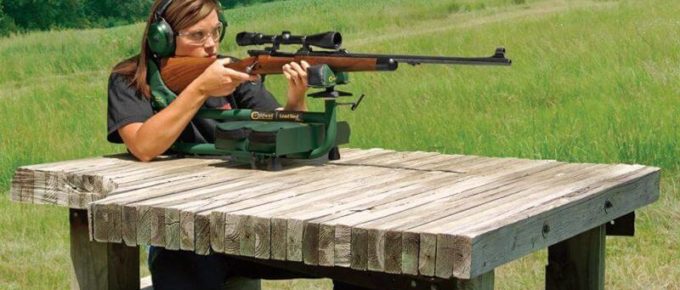

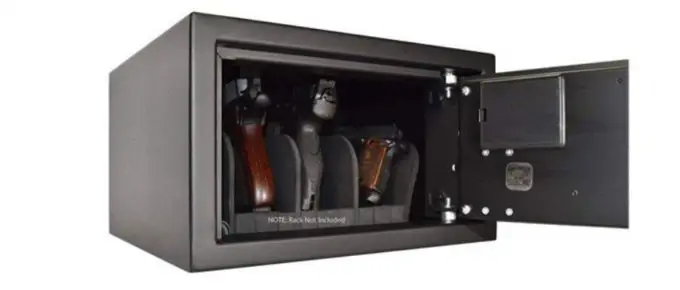
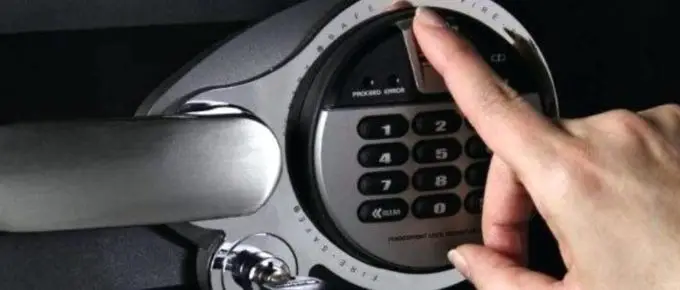
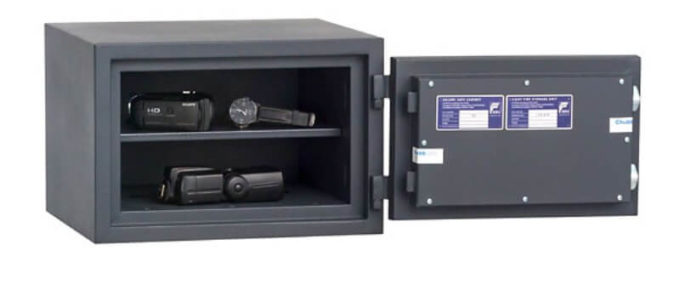
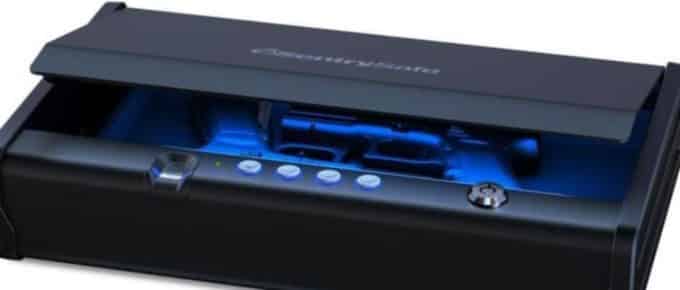
Leave a Reply